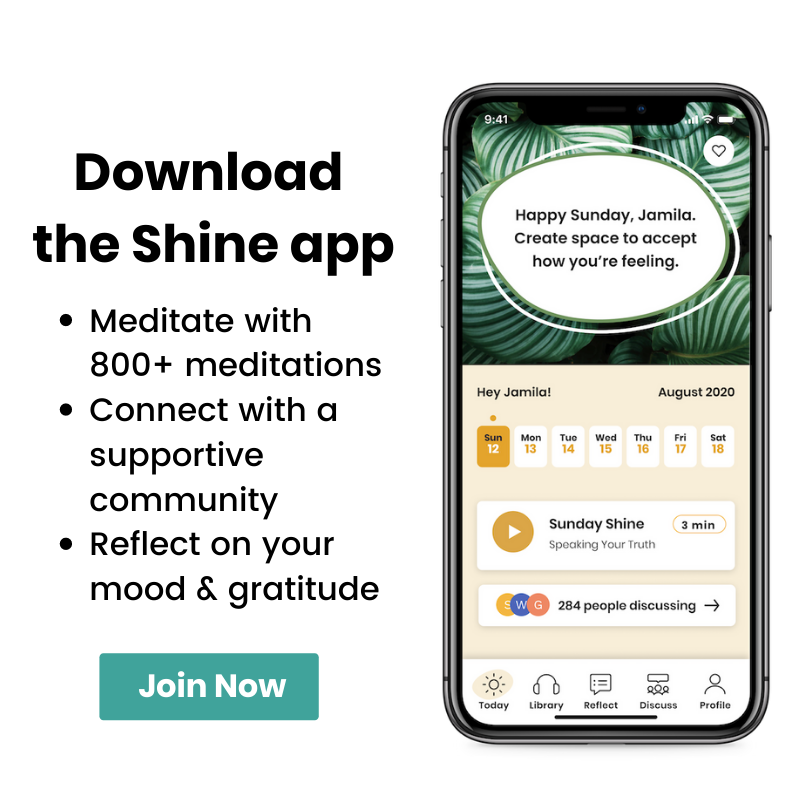The Question I'm Asked Most as a Therapist—and My Answer
The question I’m asked most as a therapist: “How do I stop feeling (insert uncomfortable feeling here).”
After difficult experiences, the thing that people want most is to stop feeling sad, angry, mad, resentful—or anything else remotely uncomfortable.
But despite what the #goodvibesonly hashtag on Instagram might tell you, having a range of feelings—yes, even the uncomfortable ones—is both human and healthy. And while our impulse is often to try and shut down the emotions that make us uneasy, doing the opposite is actually better for your wellbeing.
Studies show uncomfortable feelings, such as sadness and hatred, tend to last longer when people fixate on the discomfort of the feeling.
The hard truth: We don’t get rid of feelings because we’re tired of having them. Feelings go away once we accept them and we’re no longer responding to the stimuli that created them—but we’ve become masters at making that process difficult for ourselves.
We don’t get rid of feelings because we’re tired of having them. Feelings go away once we accept them and we’re no longer responding to the stimuli that created them.
Here are a few unhealthy ways people try to rid themselves of feelings:
●︎ Minimizing: Minimizing happens when people try to deny the impact of certain events or reduced the significance of certain experiences. For example: “He dumped me, but I didn’t care about him anyway.” People who minimize believe that reducing the significance lessens the blow.
●︎ Ignoring: Truly being numb to pain is a sign that pain is not new to you. It’s so familiar that it doesn’t even warrant a response. When people ignore, it’s often the case that they’ve experienced so much that they process this new event as the same ol’ thing happening again.
●︎ Moving on too soon: People who crave getting over a feeling will allow themselves to feel, but only for a short time. Their heart is set on getting over the experience as quickly as possible. In trying to get over it, people repeat the same patterns because they haven’t given themselves enough time to process their feelings.
When a negative emotion appears, your goal shouldn’t be to get rid of it–it should be to manage it.
Wondering what that looks like? To start, try asking yourself these 3 questions the next time an uncomfortable feeling appears:
1. How am I feeling?
Have you ever seen a feelings chart? It’s a diagram with about 20 facial expressions with the meaning (feeling) of the faces directly under the feeling.

It’s important to know that feelings cannot be described as “good, bad, or OK”—those are not feelings. They’re common words we use to talk about how we’re doing not what we feel.
Naming your feelings sounds like:
“I feel sad when...”
“I get upset about...”
Studies show that when you name your feelings, you lessen their intensity and make it easier to regulate them.
Naming your feelings is a great communication style that is highlighted as a healing component in Emotion-Focused Therapy (EFT). And studies show that when you name your feelings, you lessen their intensity and make it easier to regulate them.
2. Why am I feeling this way?
A feeling can typically be traced back to a trigger. Triggers work in connection with your five senses. You can be triggered by something you saw, heard, touched, smelled, or tasted—and our senses can trigger both positive and negative memories.
Once you’ve determined what triggered your feeling, determine the why.
●︎ Why this feeling?
●︎ What about this experience is causing me to feel this way?
Are there any thoughts that contribute to the way you feel? As soon as you feel something, notice the thoughts that pop up in your head. Write the thoughts down. They are the key to helping you process your feelings.
3. How can I cope with this feeling?
When you deny your feelings, there's no room for the feeling to be processed and released. Naming emotions facilitates processing and moving forward.
Acknowledging the impact of a feeling also helps you recognize and prevent triggering situations in the future. You can only grow from situations when you learn from them.
It’s important to recognize your feelings as a way to prevent similar issues from reoccurring in the future. If you notice a difficult feeling pop up over and over again, that’s your cue to create a plan to deal with it.
When you deny your feelings, there's no room for the feeling to be processed and released.

For example: Say every time you hear Christmas music, you feel sad and cry. Create a healing strategy by intentionally focusing on positive memories when you hear the music. This changes your reaction from one that was once negative to a positive one—it might feel difficult at first, so be kind to yourself. Over time, developing go-to positive behaviors when certain feelings arise will help get you through the difficult moments.
Managing difficult feelings is the only way to process them. Minimizing, ignoring, and moving on too soon prolongs your difficult feelings because your feeling will simply boomerang back at an inconvenient time.
Allow your feelings to happen, experience them, and create a plan to manage them.
Read next: An Ode to Radicaly Accepting All Our Feelings—Good and Bad

Shine is supported by members like you. When you buy through links on our site, we may earn an affiliate commission. See our affiliate disclosure for more info.


